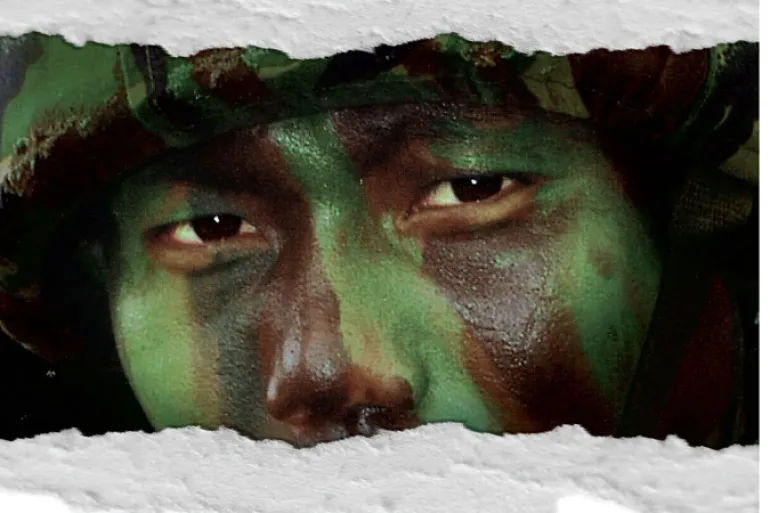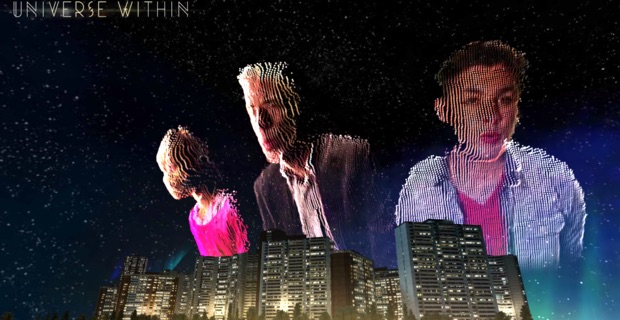- Title: Fort McMoney
- Director: David Dufrensne
- Producer/Broadcast partners: TOXA, Arte, National Film Board of Canada
- Launch: IDFA November 25, 2013

Fort McMoney is a new documentary game that makes players interact with the world of oil and money. It’s based on the town of Fort McMurray in Canada, which has one of the largest oil reserves in the world. The player will be a character who comes to a virtual town that has grown from 10,000 inhabitants to 100,000 in just a few years. He explores and interacts with other people, to come to know more about the city from where 1.5 million barrels of oil are extracted every day.
Billions of dollars can be made but at what cost? There is a huge environmental impact on the planet. The game is played over a four-week period where the players have to interact with other people to gain influence, vote for referendums and decide on the destiny of the virtual city.

The subject is not new the oil industry and even Fort McMurray has been an issue that filmmakers have tackled before. But the format is new. There are only a handful of documentary games and they are restricted largely to the audience involved in serious games. French public broadcaster Arte and the National Film Board of Canada have come together to take this initiative to a much larger audience- an audience interested in interactive new formats and in international politics and energy issues.
I have not played this game yet. I am curious about this subject and interactive documentaries as a field and will review the game shortly. Why did David Dufresne, the creator of this game choose to make a documentary game over a traditional documentary? I asked him this question and a few others to understand what went behind the creation of Fort McMoney.

1. Why did you choose to make a documentary game over a conventional documentary?
Precisely to avoid getting into what you call… a normal documentary. I’m joking, but just barely. I have a great appreciation for the documentary genre, but I’ve been interested in other forms of writing for years. Even in my latest book, which investigates the topic of anti-terrorist police in France, I tried to delve into different forms: non-fiction, gonzo journalism, investigation and web-style fragmented writing.
2. Do you think this format will have better reach and create more awareness about the issue?
Or was it a more personal reason that involved your passion and interest in the interactive world? Is this documentary game a serious game (a term) that users are familiar with?
We’ll find out in… a few days:-) What we’re hoping to do is create an opening or, more specifically, take up where others left off. What a simulation or management-type video game had to offer struck us as particularly relevant in this instance. Let’s play a reality. Let’s take control of a city that exists, that drives the economy of a gigantic country – Canada – and make it a topic of international debate.
That being said, let’s not delude ourselves. Clearly, what’s called “gamification” can’t be considered a miracle alternative. Some topics gain in intensity and immersion; others lose their punch. In the case of Fort McMoney, we were counting on the game to serve as a vector for interest, as a lever for debate, and as a tool for confrontation and total delinearization. With this wild desire: to provide an exploration of the city on a par with its unbridled and limitless development.
3. Would you be able to describe the production process so that producers around the world who are thinking of getting into interactive projects get a clear idea of what it entails?
I had just arrived with my family in Montreal. Hugues Sweeney at the NFB told me to go see the Toxa team. After a short chat and three coffees, it was all settled. I suggested an idea that was simple – but impossible: making a SimCity for real. Once they agreed, I was really stumped: We had to figure out how to do it.
The first thing was to go on location. Get a feel for the city, its oil, its money, and its inhabitants. I asked some friends who are game designers for advice and, together, we laid the groundwork for the game’s mechanics. Next, we wrote, tossed out and rewrote dozens of scripts. I like to write the script while I’m on the site where I’ll be shooting – in the car, at a restaurant or hotel.
Whenever I have five minutes, I jump onto my Scrivener (http://www.literatureandlatte.com/scrivener.php), the most fantastic work tool I’ve ever had.
I like the location where I am to take over the entire space, my whole mind. Prison Valley was built on Mean street, an autonomous film; Fort McMoney was constructed in a limitless space that extends as far as the eye can see. I think the project bears that mark. At least I hope so. All the work after that involved continually striking a balance between what the game required and what a documentary demands. One of the difficult things is making technical choices very early on and praying really hard that they’re the right ones and will still be valid two or three years later.

It was two years of madness, writing, editing and rewriting scripts. It had several production stages, including development (1,940 hours), research, investigations, shoots in various locations (60 days) and editing (7 months).
As time went by, people dropped out of the project and others came on board. Fort McMoney is really the result of multiple skills in addition to many cultures and approaches: the North American approach, embodied by Toxa and the NFB, and a more European one, represented by my collaborator Philippe Brault behind the camera and the Arte team.
4. What would you say would be the one skill set that someone getting into interactive projects should develop before they even think of a project?
Find a good story. And make sure that it’s a strong story. Do lots of shoots, and don’t sleep much. And constantly think about the best format to showcase that… bloody story. In other words, it’s always the narrative that determines the rules. But the rules change. And the rules here are web tools.
5. How easy was it to get funding for this project?
The answer is obvious: Fort McMoney exists because of public funding. There are various ways to fund interactive projects in Canada and a number of organizations provide different funding programs, including the Canada Media Fund. The NFB is a government agency that produces auteur documentaries, animated films and interactive works. In recent years, the NFB has been devoting 20% of its production budgets more specifically to interactive works.
The search for funding went rather smoothly. The NFB and ARTE (license purchase) was involved from the start. The first funding request for development that TOXA submitted was approved in the first round by the Canada Media Fund, as was the funding request for production during the second stage.
6. Would you be able to share the budget for this project?
The total budget for the Fort McMoney project is $872,000. Of that, the NFB’s participation was $270,000 – about (30%) of the total budget. TOXA, the project initiator and major producer had access to funding programs devoted to interactive works via the experimental component of the Canada Media Fund.
It was also made possible thanks to the participation of ARTE, another partner in the project via a license. From what I know, Fort McMoney is a web documentary with production costs in the midrange of documentary productions in Canada, and more specifically at the NFB.
7. There have been a number of films from Canada in the recent past, interactive and documentary, tackling the subject of oil and drilling. Do you have any expectations on the overall pressure this is putting on the big oil companies?
Just on the basis of my own experience, I can tell you that I’m inclined to say “yes”: the companies are under pressure. The Big Oil Companies were extraordinarily creative in finding ways to make us wait – over a year.
At one point, they were on vacation. In other instances, they couldn’t take us onto a site for this or that reason: a problem with the weather, security, safety or professional secrecy. Fort McMoney players get to experience that game of hide and seek. They too have to be creative if they want to reach the core of the world’s biggest industrial site.

8. Do you think an interactive game that really needs significant user participation could put off a potential audience who is used to more passive forms of media and could have been interested to know more about the issue?
It’s a risk. And that’s what makes it exciting. Personally, I believe that Fort McMoney, like other interactive works, is in a category similar to Research and Development. Everything needs to be formulated, worked out, and called into question.


